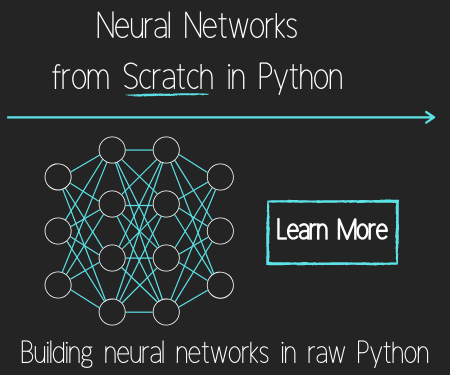Hough Lines - Python Plays GTA V
In this Python plays Grand Theft Auto tutorial, we're going to incorporate the Hough Line finding functionality from OpenCV. Code up to this point:
import time
from directkeys import ReleaseKey, PressKey, W, A, S, D
import pyautogui
def roi(img, vertices):
mask = np.zeros_like(img)
cv2.fillPoly(mask, vertices, 255)
masked = cv2.bitwise_and(img, mask)
return masked
def process_img(original_image):
processed_img = cv2.cvtColor(original_image, cv2.COLOR_BGR2GRAY)
processed_img = cv2.Canny(processed_img, threshold1=200, threshold2=300)
vertices = np.array([[10,500],[10,300], [300,200], [500,200], [800,300], [800,500]], np.int32)
processed_img = roi(processed_img, [vertices])
return processed_img
def main():
last_time = time.time()
while(True):
screen = np.array(ImageGrab.grab(bbox=(0,40, 800, 640)))
new_screen = process_img(screen)
print('Loop took {} seconds'.format(time.time()-last_time))
last_time = time.time()
cv2.imshow('window', new_screen)
#cv2.imshow('window2', cv2.cvtColor(screen, cv2.COLOR_BGR2RGB))
if cv2.waitKey(25) & 0xFF == ord('q'):
cv2.destroyAllWindows()
break
Next, we're going to use the HoughLinesP algorithm from OpenCV, which finds lines based on a few parameters. We'll add this to our process image function:
def process_img(original_image):
processed_img = cv2.cvtColor(original_image, cv2.COLOR_BGR2GRAY)
processed_img = cv2.Canny(processed_img, threshold1=200, threshold2=300)
vertices = np.array([[10,500],[10,300],[300,200],[500,200],[800,300],[800,500],
], np.int32)
processed_img = roi(processed_img, [vertices])
# more info: http://docs.opencv.org/3.0-beta/doc/py_tutorials/py_imgproc/py_houghlines/py_houghlines.html
# edges rho theta thresh # min length, max gap:
lines = cv2.HoughLinesP(processed_img, 1, np.pi/180, 180, 20, 15)
draw_lines(processed_img,lines)
return processed_img
Now, we don't yet have this "draw_lines" function, let's make that:
def draw_lines(img,lines):
for line in lines:
coords = line[0]
cv2.line(img, (coords[0], coords[1]), (coords[2], coords[3]), [255,255,255], 3)
Simple enough, it just simply draws some thicker lines over where it seems to find lines. Full code up to this point:
import numpy as np
from PIL import ImageGrab
import cv2
import time
from directkeys import ReleaseKey, PressKey, W, A, S, D
def draw_lines(img,lines):
for line in lines:
coords = line[0]
cv2.line(img, (coords[0], coords[1]), (coords[2], coords[3]), [255,255,255], 3)
def process_img(original_image):
processed_img = cv2.cvtColor(original_image, cv2.COLOR_BGR2GRAY)
processed_img = cv2.Canny(processed_img, threshold1=200, threshold2=300)
vertices = np.array([[10,500],[10,300],[300,200],[500,200],[800,300],[800,500],
], np.int32)
processed_img = roi(processed_img, [vertices])
# more info: http://docs.opencv.org/3.0-beta/doc/py_tutorials/py_imgproc/py_houghlines/py_houghlines.html
# edges rho theta thresh # min length, max gap:
lines = cv2.HoughLinesP(processed_img, 1, np.pi/180, 180, 20, 15)
draw_lines(processed_img,lines)
return processed_img
def roi(img, vertices):
#blank mask:
mask = np.zeros_like(img)
# fill the mask
cv2.fillPoly(mask, vertices, 255)
# now only show the area that is the mask
masked = cv2.bitwise_and(img, mask)
return masked
def main():
last_time = time.time()
while(True):
screen = np.array(ImageGrab.grab(bbox=(0,40, 800, 640)))
new_screen = process_img(screen)
print('Loop took {} seconds'.format(time.time()-last_time))
last_time = time.time()
cv2.imshow('window', new_screen)
#cv2.imshow('window2', cv2.cvtColor(screen, cv2.COLOR_BGR2RGB))
if cv2.waitKey(25) & 0xFF == ord('q'):
cv2.destroyAllWindows()
break
If we run this with main(), we get something like:
Image(filename='lines-detected.png')
Okay, hmm, not the strongest lines. This is happening due to all this aliasing going on. Let's smooth this image, then look for lines. For this, we'll blur with cv2.GaussianBlur:
def process_img(original_image):
processed_img = cv2.cvtColor(original_image, cv2.COLOR_BGR2GRAY)
processed_img = cv2.Canny(processed_img, threshold1=200, threshold2=300)
vertices = np.array([[10,500],[10,300],[300,200],[500,200],[800,300],[800,500],
], np.int32)
processed_img = cv2.GaussianBlur(processed_img,(5,5),0)
processed_img = roi(processed_img, [vertices])
# more info: http://docs.opencv.org/3.0-beta/doc/py_tutorials/py_imgproc/py_houghlines/py_houghlines.html
# edges rho theta thresh # min length, max gap:
lines = cv2.HoughLinesP(processed_img, 1, np.pi/180, 180, 20, 15)
draw_lines(processed_img,lines)
return processed_img
Image(filename='blurred-and-lines-detected.jpg')
NOW we're cookin! The longest and most dominant lines are undoubtedly the lanes.
-
Reading game frames in Python with OpenCV - Python Plays GTA V
-
OpenCV basics - Python Plays GTA V
-
Direct Input to Game - Python Plays GTA V
-
Region of Interest for finding lanes - Python Plays GTA V
-
Hough Lines - Python Plays GTA V
-
Finding Lanes for our self driving car - Python Plays GTA V
-
Self Driving Car - Python Plays GTA V
-
Next steps for Deep Learning self driving car - Python Plays GTA V
-
Training data for self driving car neural network- Python Plays GTA V
-
Balancing neural network training data- Python Plays GTA V
-
Training Self-Driving Car neural network- Python Plays GTA V
-
Testing self-driving car neural network- Python Plays GTA V
-
A more interesting self-driving AI - Python Plays GTA V
-
Object detection with Tensorflow - Self Driving Cars in GTA
-
Determining other vehicle distances and collision warning - Self Driving Cars in GTA
-
Getting the Agent a Vehicle- Python Plays GTA V
-
Acquiring a Vehicle for the Agent - Python Plays GTA V
